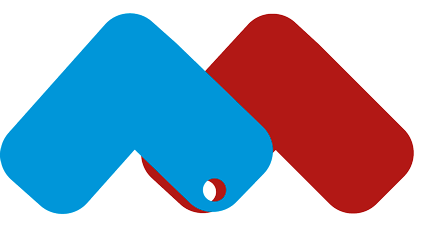Welcome to the eleventh article in our series on Self-Handicapping Leadership written exclusively for ManageMagazine by Professor Phillip Decker and Professor Jordan Mitchell.
Driving for Business Results: the Power of Focus
Eliminating self-handicapping behavior opens the doorway to effectively driving for business results. For sake of argument, we talk of business results, yet the following applies to any kind of organization.
Driving for results is constant attention to how daily actions align with a larger goal and having a mindset to master that goal.
The Enemies of Outstanding Business Results
One of the enemies of driving for results is comfort. When we are in our “comfort-zone,” everything is going “fine,” and we are maintaining the “status-quo.” We feel little need to push to perform better or reach a new goal. This mindset focuses on staying out of trouble and just completing the task and getting it over with.
Many people and organizations have the potential to be “great,” but they are comfortable being “good” because they lack clear goals, a mastery mindset, or well-defined action plans to get there.
Compounding these issues is our tendency to avoid taking risks when everything is going well. We ask, “why fix what’s not broken?” While no one is endorsing taking unnecessary risks, without some risk an organization can remain stagnant while their competition is innovating.
When not Focused on Driving Business Results
How often do you surf the web, explore social-media, read blogs, shop online, gossip or talk about sports with coworkers, think about what is for dinner, allow “short” distractions from others, gripe about the company or boss, or open your email every time you get an alert? The authors are not advocating for a complete abolishment of the aforementioned distractions – we just want to get you thinking about being “results and mastery-oriented.”
When focused on Driving Business Results
When we drive for results, we ensure daily processes align to larger outcomes, identify and control distractions, develop game plans to reach higher goals, quickly find the root cause for problems, and are directed by our visions of mastery and our action plans. We do not work for the sake of being “busy,” focus on ourselves, try to be better than everyone else, or focus on staying out of trouble.
Self-Handicapping Effects
We all have that coworker who likes to announce how busy he is and bemoan the number of hours he has worked that day. But the curious thing is: they produce very little, and it takes them longer than others to complete a task. While the obvious short-term issue may be excuses leading to poor “time management,” the longer-term obstacle is a lack of goals and clear plans driving for results.
Let a Mastery Mindset Drive your Business Results
Athletes, especially those competing alone, always have a goal in mind. They use this goal to guide their actions, it determines what they must do to achieve it. The vision (greater than their personal best, or a score to win the national title) sustains their energy and is the motivation to align their daily processes. They understand that they must stay away from distractions, work every day, and continually strive to be better. Their only objective is to reach their personal goal – their reason for being. This is a mastery mindset.
Mastery Orientation or Performance orientation
The use of performance goals in the business world has caused many leaders to fall prey to being “good enough” rather than continually striving to be great. When a worker is too far removed from the goals of the customer, they can often forget to be mastery-oriented. Neither typically ruins careers or businesses, but it does self-handicap – dooming them to mediocrity.
Driving for results means continually asking yourself if your day-to-day efforts support and are directed towards a predetermined goal and vision (the customer’s or the organization’s) and whether mastery of it is important to you.
Connect Activities with Outcomes to Drive Business Results
Many people self-handicap by not connecting their work activities with the outcomes they really want to achieve. This disconnect may be due to lack of engagement, lack of accountability, or other obstructions. We suggest asking yourself the following questions:
- Is everything I do to further an organizational goal?
- Do I have a passion for this; do I want to master it?
- Does my to-do list today align with larger outcomes?
- Before I go home for the day, do I have a game plan for tomorrow?
- How will I handle distractions throughout my day?
- What am I doing that detracts from my organizational goal?
Have you ever been in a situation where a series of good events has happened to your organization or you personally, so you “downshift” for the next couple of weeks, months, or years, to enjoy your success? Being good at what you do, or believing things are going “just fine,” often stops or delays driving for results.
Good Business Results are the Enemy of Great Business Results
Jim Collins wrote a book titled, “Good to Great: Why Some Companies Make the Leap… And Others Don’t” (Collins, 2001). Collins states that “good” is the natural enemy of “great.” He points out that we have lots of “good” organizations that survive in America, but very few “great” ones.
Collins considers great companies to be those that generate stock returns higher than the average stock market 7 out of 15 years. So what does Collins recommend to achieve this level of success?
He suggests seven principles (Collins, 2001):
- Leaders must be humble, but driven to do what’s best for the company.
- Get the right people on the bus, then figure out where to go. Finding the right people and getting them in the right positions is imperative.
- Confront the Stockholder paradox – attend to its short-term mentality but keep a longer vision and drive.
- Determine what is in the middle of three overlapping circles: “What makes you money?” “What could you be best in the world at?” and “What lights your fire?”
- Use technology to accelerate growth within the three overlapping circles above.
- Develop a culture of discipline – get rid of the fat.
- Create an additive effect of many small initiatives – they act upon each other like compound interest.
What do all of the above principles have in common? They all focus on a vision and a drive to get there. No fat and no messing about are allowed. Everyone is working toward the goal – driven to meet the goal. That is what many organizations think driving for results is all about.
But, of course, many years after the book was published, at least half of the great companies Collins identified are no longer doing so great. “Circuit City was bankrupt, Fannie Mae went bankrupt/nationalized, Wells Fargo needed a bailout, Nucor’s stock and revenue crashed, Pitney Bowes went down significantly, and Gillette is no longer independent.”
Collin’s methodology is problematic. He measured a company’s ‘greatness’ by its sustained stock market value being a certain percentage (150%) above the general market. There are too many factors involved here to say that vision and driving for results will overcome the effect of a national economy. Yet, it does seem strange that ‘greatness’ was so easily lost, so quickly.
We think that many companies do a great job visioning, aligning, and developing dashboards and other tools to keep that alignment. Many do better than the market average for these reasons. They stay focused and driven. Yet, most do not. They fail because there is no mastery mindset and their drive diminishes over time.
From Great Business Results Back to Good Ones
Employees and leaders alike can only keep up a superhuman level of work for so long without some motivation. Without the spark that comes from something that “lights your personal fire,” all of us will eventually let up. We will “go back to normal” and “regress toward the mean.” Excuses set in for the very purpose of allowing reduced effort.
Get Great Business Results and Stay Great
So, what is the answer? Are we always doomed to fall back to a more normal performance after superhuman effort (market value 150% above the general market)? Not always, but typically.
We think moving from good to great and staying there is more than vision, goals, dashboards, and especially, a driven culture. In fact, we think much of that will inevitably lead to “failure,” a “regression towards the mean.”
Take the analogy of dieting. “Binge dieting” does not work. The way to lose weight is to change your lifestyle – eat less, eat healthy, and exercise. Healthy living in an organization is to reduce self-handicapping. That is the only way you can cut out the wasted effort and sustain a palatable pace forever in an organization.
When leaders, managers, and workers begin to understand self-handicapping, healthy organizational living can start. The bus can be further loaded with employees that have mastery goals. A drive for results must be based on removing self-handicapping.
Accountability
Accountability is a fundamental starting place when driving for results. Suppose a company has a history of tremendous market shares in their industry, but because of changing demographics, more competition, and static management, the company is now losing the majority market share.
The leader brings excuses to a meeting of directors in order to explain why they have begun to lose the majority market share (e.g., more competition, competition is innovating more, etc.) He/she starts most sentences with, “the competition,” which creates a lack of focus on the true customers (the stock holders and product consumers).
Shifting the focus to the competition (a non-customer) can be deadly for organizations because in the face of stiff competition any leader has to choose between three strategies: do what the competition does, make the product cheaper or faster, or be innovative and supply what the customer wants without even knowing what they want. A downward slide to matching competitors starts with excuses, which lead to reduced effort to retool the strategy.
Applying Accountability to Mastery Goals when Driving for Business Results
Those with mastery goals have a personal vision, clear action plans, are innovative, are accountable for their own learning, and they have alignment between their everyday processes and desired customer outcomes at work. One way of dealing with this is, “micro-planning”, or making sure that what you do every year, month, and day aligns with your multi-year goals and vision.
Time-Management and Micro-Planning
Everyone has experienced arriving at work and not knowing exactly what to do – or how to fit tasks into specific time periods – time optimization. Imagine arriving at work at 7:30 and you have a manager’s meeting at 8:00. What do you do during that 30-minute window?
If you are like many, you might use that 30 minutes to wake up, get coffee, or even find out what’s new on social media. Now imagine using that time to practice before the meeting, get a task on your “to-do” list checked off, or review information from other industries. Think of the confidence boost you would have walking into the meeting after already crossing off one item on your list or being ahead of the game in other ways.
Make the Bed
Do you know why people in, and retired from, the military always make their bed when they get out of it? In the 2014 University of Texas commencement address, Admiral Bill McRaven, head of the US Special Operations Command and a Navy Seal, urged graduates to make their beds every morning. Admiral McRaven (2014) said, “If you make your bed every morning, you will have accomplished the first task of the day. It will give you a small sense of pride and it will encourage you to do another task and another”.
Walk First – then Run
By now, you have noticed the “baby-steps” at the end of each article in this series. Upon first glance, you may have said to yourself, “that is such a small and mundane task, I don’t need to practice that.” We have given you those baby steps to give you a small first step to get you started – this, like bed making, will give you the confidence to keep going. You must first learn to walk, and then you can run. And if you have a bad day – at least you will come home to a made bed – that YOU made!
Keep in mind that you can create an organizational culture that will kill mastery and driving for results. People with mastery goals need autonomy and purpose. Oldham and Hackman (2005) said that there were several core dimensions to any work that increased satisfaction and motivation. They showed that workers experience three psychological states in work:
- Meaningfulness of work – when work has meaning and is something one can relate to, this causes intrinsic motivation. The work is motivating in and of itself. Meaningfulness of work comes from having:
- Skill Variety – an opportunity to use a variety of skills and talents.
- Task Identity – being able to identify how something is done and why.
- Task Significance – being able to identify the task as contributing to something wider, to society or a group.
- Autonomy – one is given the opportunity to be a success or failure and have the ability to make changes and incorporate the learning gained in doing the job.
- Knowledge of outcomes – providing knowledge on how successful the work has been, enables one to learn from mistakes and to connect emotionally to the customer of the output, which gives purpose to the work.
Knowing these critical characteristics and building them into the work makes it possible to create a culture that provides purpose and autonomy where those with mastery goals will thrive. Driving for results then becomes a natural outcome. A poor culture will drive out individuals seeking mastery.
Here are some baby steps to aid you in driving for results:
- Every day, start with a small and easy task that you can complete quickly. Don’t forget to make your bed every morning! Be proud of it.
- Write out a personal vision and develop an action plan that aligns with that vision.
- From your action plan, identify a longer-term goal and break it down into yearly, monthly, and weekly target checkpoints.
- Take a piece of paper and write down all of the things you did last week that were not mastery-oriented, such as efforts to not make mistakes or be better than others. Then make a list of what you did to be more competent or to satisfy customers at a higher level. Think about the proportion of time spent in performance goals and how that is affecting your career.
The curious and interested reader can find many more steps and valuable suggestions in our book Self-Handicapping Leadership: The Nine Behaviors Holding Back Employees, Managers, and Companies, and How to Overcome Them
References
Collins, J. (2001). Good to Great. New York, NY: Harper Collins Publishers.
Oldham, G., & Hackman, J. (2005). How job characteristics theory happened. In: Smith KG, Hitt MA The Oxford handbook of management theory: The process of theory development. Oxford, UK: Oxford University Press.
University of Texas at Austin 2014 Commencement Address – Admiral William H. McRaven. (2014). University of Texas at Austin.
List of articles in the Series about Self-Handicapping Leadership:
#1: Why Self-Handicapping Leadership can be a Hurtful Strategy
#2: From Self-Handicapping Leadership to Mastery Management
#3: Overcoming Self-Handicapping Leadership and the Problem of Accountability
#4: Self-Awareness and Self-Handicapping Leadership
#5: Tunnel Vision – Its Drawbacks and How to Stay Clear of it
#6: How to Skyrocket Employee Motivation and Engagement
#7: Be Best at the Managerial Decision Making Process
#8 Importance of Communication Skills for Leadership and Management
#9 Talent Development Planning and How to Get it Right?
#10 Are you Micromanaging? STOP IT. See Why









